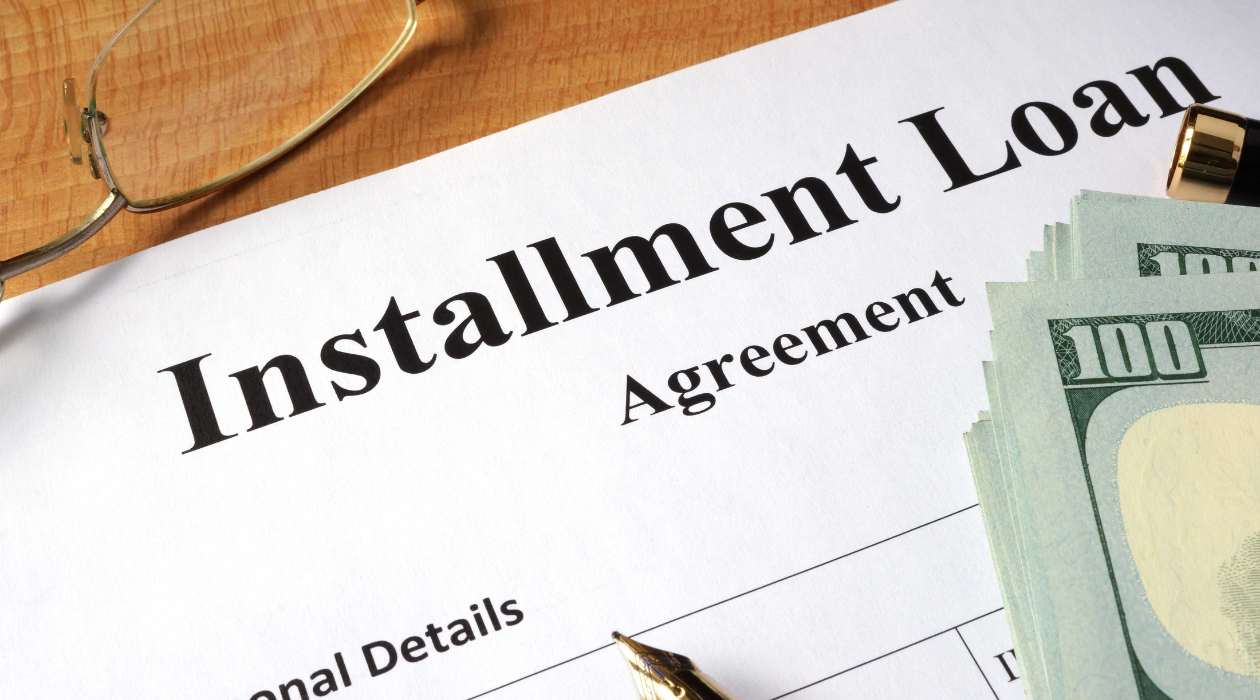Home>diy>Building & Construction>How To Start A Construction Firm


Building & Construction
How To Start A Construction Firm
Modified: December 7, 2023
Learn the essential steps to start your own construction firm and succeed in the building construction industry. Expert tips and guidance for aspiring entrepreneurs.
(Many of the links in this article redirect to a specific reviewed product. Your purchase of these products through affiliate links helps to generate commission for Storables.com, at no extra cost. Learn more)
Introduction
Welcome to the exciting world of construction. Starting your own construction firm can be a rewarding and profitable venture, but it requires careful planning and preparation. Whether you have years of experience in the industry or are just starting out, this comprehensive guide will take you through the essential steps to successfully launch your construction firm.
Construction is a booming industry that encompasses a wide range of projects, from residential homes to commercial buildings and infrastructure development. As a construction firm owner, you will have the opportunity to bring clients’ dreams to life by creating functional and aesthetically pleasing structures.
Before diving into the world of construction, it is important to understand that success in this industry relies on a multitude of factors. These include having a solid business plan in place, complying with legal and licensing requirements, securing financing, building a skilled workforce, and effectively marketing your services.
In this guide, we will break down the key steps involved in starting a construction firm, providing you with practical tips and insights along the way. From conducting thorough research to ensuring safety and quality control, we will cover everything you need to know to lay a strong foundation for your construction business.
Whether you are considering starting a small-scale residential construction firm or aiming to tackle large-scale commercial projects, this guide will equip you with the knowledge and tools necessary to navigate the world of construction and achieve long-term success.
So, let’s get started on this exciting journey!
Key Takeaways:
- Thorough research, strategic planning, and continuous market monitoring are essential for laying a strong foundation for a successful construction firm. Investing time and effort into these initial steps increases the likelihood of long-term success.
- Prioritizing safety, quality control, and fostering strong relationships with subcontractors and suppliers are crucial for the reputation and success of a construction firm. By emphasizing these aspects, a construction firm can thrive in the dynamic industry.
Read more: How To Start A Construction Business
Step 1: Research and Planning
Research and planning are crucial steps in establishing a successful construction firm. Before diving into any business venture, it is essential to gain a deep understanding of the industry, the local market, and the competition. This knowledge will help you make informed decisions and develop an effective business strategy.
Begin by conducting extensive market research to identify the demand for construction services in your target area. Analyze the current market trends, the types of construction projects in high demand, and the average pricing for similar services. This research will help you identify potential opportunities and areas where you can stand out.
Next, create a detailed business plan that outlines your goals, target market, services offered, and financial projections. A well-developed business plan will serve as a roadmap for your construction firm and will be essential when seeking financing or investors.
Within your business plan, include a thorough analysis of your target market, including information such as demographics, competition, and potential clients. Identify your unique selling proposition, which sets your firm apart from others, and outline strategies to attract and retain clients.
Additionally, consider the legal and regulatory aspects of starting a construction firm. Familiarize yourself with the necessary licenses, permits, and insurance requirements in your jurisdiction. This will help ensure compliance and avoid any legal complications down the line.
During the research and planning phase, it’s also crucial to assess your own skills and expertise. Determine your strengths and weaknesses, as well as any areas where you may need to expand your knowledge or hire specialized staff. Building a strong team will be key to the success of your construction firm.
Remember, research and planning are ongoing processes. Continuously monitor the market and adapt your business plan accordingly. Stay updated with the latest industry trends and technologies to remain competitive and provide cutting-edge services to your clients.
By investing time and effort into thorough research and strategic planning, you will increase the likelihood of success for your construction firm. These initial steps will lay the foundation for a strong and thriving business.
Step 2: Formulating a Business Plan
A well-crafted business plan is essential for the success of your construction firm. It serves as a roadmap, outlining your company’s goals, objectives, strategies, and the steps required to achieve them. A comprehensive business plan not only helps you stay focused on your objectives but also acts as a tool to attract potential investors or secure financing.
When formulating your business plan, start by clearly defining your company’s vision and mission. What do you want your construction firm to achieve? What values and principles will guide your operations? Take the time to articulate your long-term goals and the overarching purpose of your business.
Next, identify your target market. Who are your ideal clients? Are you focusing on residential, commercial, or industrial projects? Understanding your target market will allow you to tailor your services and marketing efforts to meet their specific needs.
Conduct a thorough analysis of your competition. What are their strengths and weaknesses? How can your construction firm differentiate itself in the market? Identify your unique selling propositions and showcase them in your business plan.
When it comes to financials, create a detailed budget that outlines your projected expenses, revenue streams, and profit margins. Consider all the costs involved in running your construction firm, including equipment, permits, insurance, marketing, and staff salaries. A solid financial plan will demonstrate to potential investors and lenders that you have carefully considered the financial aspects of your business.
Another important aspect of your business plan is the marketing strategy. How will you promote your construction services and attract clients? Identify effective marketing channels, such as online advertising, social media, networking, and referrals. Develop a clear branding strategy that communicates your unique value proposition to potential clients.
Lastly, outline your operational plan. How will you manage projects efficiently? What systems and processes will you have in place to ensure timely completion and quality control? Detailing your operational plan will demonstrate to stakeholders that you have carefully considered the day-to-day operations of your construction firm.
Remember, a business plan is a dynamic document that should be regularly reviewed and updated as your construction firm grows and evolves. It provides a roadmap for your business, allowing you to stay focused and make informed decisions along the way. By formulating a comprehensive business plan, you set the foundation for a successful and thriving construction firm.
Step 3: Legal and Licensing Requirements
Ensuring compliance with legal and licensing requirements is a crucial step in starting a construction firm. Understanding the legal framework and obtaining the necessary licenses and permits will help you operate your business legally and avoid potential penalties or legal issues in the future.
First and foremost, familiarize yourself with the specific legal requirements for construction firms in your jurisdiction. This may include obtaining a general contractor’s license or specialty licenses, depending on the type of construction work you plan to undertake. Check with your local government or regulatory agencies to determine the exact licensing requirements for your area.
Once you have identified the necessary licenses, gather the required documentation and complete the application process. This usually involves providing proof of experience, financial stability, and liability insurance. Depending on your location, you may also need to pass exams or provide references. Be prepared to meet any specific criteria set by the licensing authority.
In addition to licensing requirements, you must also comply with other legal aspects of running a construction firm. This includes registering your business with the appropriate government agencies, such as obtaining a tax identification number and registering for any required state or local taxes.
Ensure that you have appropriate insurance coverage for your construction firm. General liability insurance, workers’ compensation insurance, and property insurance are among the common types of insurance that construction firms should have. Consult with an insurance professional who specializes in the construction industry to determine the coverage that best suits your needs.
Compliance with health and safety regulations is another important legal consideration for construction firms. Familiarize yourself with the Occupational Safety and Health Administration (OSHA) regulations and ensure that you have proper safety procedures and training in place to protect your workers and comply with the law. Regularly review and update your safety policies to maintain a safe working environment.
It is also vital to have contracts and agreements in place for your construction projects. Consult with a lawyer to draft contracts that clearly outline the rights, responsibilities, and obligations of all parties involved in the project. Having well-drafted contracts will protect your interests and provide legal recourse in case of disputes.
By taking the necessary steps to meet legal and licensing requirements, you demonstrate your commitment to operating your construction firm ethically and legally. Compliance with these regulations will help build trust with clients, suppliers, and regulatory authorities, paving the way for long-term success in the industry.
Step 4: Financing and Budgeting
Securing adequate financing and effectively managing your budget are crucial elements of starting a construction firm. Without proper financial planning, it can be challenging to cover startup costs, sustain operations, and achieve profitability. Here are some key considerations for financing and budgeting your construction firm:
1. Determine your startup costs: Calculate all the expenses associated with starting your construction firm, including equipment purchase or lease, office setup, licensing fees, marketing expenses, and initial working capital. Having a clear understanding of your startup costs will help you plan your financing needs.
2. Explore funding options: Depending on the size and scope of your construction firm, there are various funding options available. These can include personal savings, bank loans, lines of credit, investment from partners or investors, and government grants or loans. Research and assess the pros and cons of each option to determine which ones align with your financial goals.
3. Create a comprehensive budget: Develop a detailed budget that outlines your projected income and expenses on a monthly, quarterly, and annual basis. Consider all costs involved in running your construction firm, such as overhead expenses, material costs, labor costs, equipment maintenance, insurance premiums, and marketing expenses. Be realistic and conservative in your estimations.
4. Track and manage expenses: Implement robust financial management systems to track your expenses and monitor your budget. Utilize accounting software to record all income and expenses, and regularly review financial statements to identify any areas of concern or opportunities for cost savings. Stay disciplined in adhering to the budget to avoid financial strain.
5. Negotiate favorable terms with suppliers: Building strong relationships with suppliers and subcontractors can help you secure favorable prices and payment terms. Negotiating bulk discounts or prompt payment arrangements can contribute to cost savings and improve cash flow.
6. Consider project financing options: For larger construction projects, explore project financing options such as construction loans or progress billing. These can provide the necessary funds to cover upfront expenses before receiving payment from clients.
7. Establish financial reserves: Building financial reserves is essential to handle unexpected expenses, downturns in the market, or delays in project payments. Set aside a portion of your revenue as a contingency fund to mitigate any financial risks that may arise.
Remember, effective financial management is an ongoing process. Regularly review and analyze your financial performance, make adjustments as necessary, and consult with financial professionals if needed. By diligently managing your finances and adhering to your budget, you will position your construction firm for long-term success.
Read more: How To Start A House Construction
Step 5: Finding and Hiring Skilled Workers
Building a skilled and competent workforce is critical to the success of your construction firm. Hiring workers who possess the necessary skills, experience, and work ethic will ensure that your projects are completed efficiently and to the highest quality standards. Here are some steps to help you find and hire skilled workers for your construction firm:
1. Define your staffing needs: Determine the specific roles and positions you need to fill within your construction firm. This may include project managers, site supervisors, skilled contractors, carpenters, electricians, plumbers, and laborers. Having a clear understanding of your staffing needs will help you target your recruitment efforts effectively.
2. Tap into multiple recruitment channels: Utilize a variety of recruitment channels to attract a diverse pool of candidates. This can include online job platforms, industry-specific job boards, social media platforms, local networking events, trade schools, and word-of-mouth referrals. Cast a wide net to ensure you reach a wide range of qualified candidates.
3. Craft compelling job descriptions: Develop detailed and enticing job descriptions that clearly outline the expectations, qualifications, and responsibilities of each position. Highlight the unique benefits of working for your construction firm, such as opportunities for growth, competitive salaries, positive work culture, and challenging projects. A well-crafted job description will attract candidates who align with your company values.
4. Implement a structured selection process: Design a structured selection process that includes screening resumes, conducting phone or video interviews, and holding in-person interviews with top candidates. Consider implementing skills assessments, practical tests, or case studies to evaluate the candidates’ abilities and suitability for the role.
5. Check references and verify credentials: Take the time to check references provided by applicants to verify their work history, reliability, and skills. It is also important to verify any necessary certifications or licenses required for specific roles, such as electricians or plumbers.
6. Assess cultural fit: In addition to skills and qualifications, evaluate the cultural fit of potential candidates. Look for individuals who align with your company’s values, exhibit strong work ethics, and demonstrate the ability to work well in a team environment. Assess their communication skills, problem-solving abilities, and adaptability.
7. Invest in training and development: Once you have hired skilled workers, invest in their ongoing training and development. Offer opportunities for professional growth through workshops, seminars, certifications, and on-the-job training. This will not only enhance their skills but also foster loyalty and a sense of belonging within your construction firm.
Remember, hiring skilled workers is an ongoing process. Continuously network, stay updated on industry trends, and actively seek out new talent. By building a team of skilled and dedicated professionals, you will position your construction firm for success and deliver exceptional results to your clients.
Tip: Research the local market and identify a niche or specialty for your construction firm. This will help you stand out and attract potential clients.
Step 6: Choosing the Right Location for the Firm
The location of your construction firm plays a crucial role in its success. Choosing the right location can have a significant impact on your ability to attract clients, access resources, and operate efficiently. Consider the following factors when selecting a location for your construction firm:
1. Market proximity: Assess the proximity of your construction firm to your target market. Being located close to potential clients can enhance your accessibility and increase the likelihood of securing projects. Research the local construction industry and competition in the area to gauge the demand and viability of your services.
2. Infrastructure and transportation: Evaluate the quality of infrastructure and transportation networks in the area. Consider factors such as road access, proximity to major highways, availability of public transportation, and ease of commuting for both employees and materials. A well-connected location can streamline operations and reduce logistics costs.
3. Workforce availability: Research the availability of skilled labor in the area. Assess the local talent pool and consider factors such as the presence of trade schools or vocational training centers. Being located in an area with a skilled workforce can make it easier to recruit and retain qualified workers for your construction projects.
4. Regulatory environment: Familiarize yourself with the local zoning and regulatory requirements that may impact your construction firm. Each jurisdiction may have different rules and restrictions regarding construction activities, permits, noise regulations, and environmental compliance. Ensure you choose a location that aligns with your intended scope of work and complies with all necessary regulations.
5. Cost considerations: Take into account the cost of operating in a specific location. Consider factors such as rental or real estate prices, taxes, utilities, and the overall cost of living. Opting for a location where overhead costs are reasonable and align with your budget will contribute to the financial health of your construction firm.
6. Proximity to suppliers and subcontractors: Consider the proximity to suppliers and subcontractors in the area. Being located near reliable suppliers and subcontractors can reduce transportation costs, improve project timelines, and enhance overall efficiency in your construction operations.
7. Future growth and development: Assess the potential for future growth and development in the chosen location. Consider factors such as planned infrastructure projects, economic trends, and demographic changes. Choosing a location with growth potential can position your construction firm for long-term success and expanding opportunities.
Remember, choosing the right location for your construction firm requires careful consideration of various factors. Conduct thorough research, analyze your specific needs, and weigh the pros and cons of different options. By selecting a strategically advantageous location, you can establish a strong presence in the market and create a solid foundation for your construction firm’s growth and success.
Step 7: Procuring Equipment and Supplies
Procuring the necessary equipment and supplies is essential for the smooth operation of your construction firm. Having the right tools and materials on hand not only ensures efficiency and productivity but also allows you to deliver high-quality work to your clients. Consider the following steps when procuring equipment and supplies for your construction firm:
1. Identify your equipment needs: Determine the specific equipment required for your construction projects. This may include heavy machinery such as excavators, cranes, and bulldozers, as well as smaller tools like power drills, saws, and measuring instruments. Consider both short-term needs and long-term growth projections to make informed decisions.
2. Research suppliers: Research reputable suppliers that provide the equipment and supplies you need. Look for suppliers with a track record of delivering high-quality products and excellent customer service. Consider factors such as pricing, warranty options, maintenance support, and the availability of spare parts.
3. Evaluate buy versus rent options: Assess whether it is more cost-effective to buy or rent certain equipment. For frequently used machinery or tools, purchasing may be the better option in the long run. However, for specialized equipment that is only needed for specific projects, renting may be a more practical and cost-effective choice.
4. Quality and reliability: Prioritize quality and reliability when selecting equipment and supplies. Investing in durable and reliable equipment may require a higher upfront cost but can save you money in the long term by reducing maintenance and replacement expenses. Similarly, choose reputable suppliers that offer high-quality materials and products to ensure the longevity and durability of your construction projects.
5. Consider safety features: Equipment safety should be a top priority. Choose equipment that incorporates the latest safety features and meets industry standards. Prioritize supplier relationships that provide proper training, safety manuals, and ongoing support to ensure the safe operation of the equipment.
6. Establish a supply chain: Set up a reliable and efficient supply chain for construction materials and supplies. Identify reputable suppliers for materials such as cement, steel, timber, plumbing fixtures, electrical components, and finishing materials. Develop relationships with suppliers who can consistently deliver quality products on time and at competitive prices.
7. Negotiate pricing and terms: Negotiate favorable pricing and terms with equipment suppliers and material vendors. Consider factors such as quantity discounts, payment terms, delivery schedules, and return policies. Building strong relationships with suppliers can lead to better pricing options and preferred treatment.
8. Maintain and upgrade equipment: Regularly maintain and service your equipment to ensure optimal performance and longevity. Keep detailed records of maintenance and repairs to track the reliability and performance of your equipment. Budget for equipment upgrades or replacements as needed to stay up-to-date with the latest technological advancements.
By effectively procuring equipment and supplies, you equip your construction firm to deliver high-quality work efficiently and maintain a competitive edge in the industry. Invest in reliable equipment and establish strong relationships with suppliers to ensure a smooth and successful construction operation.
Step 8: Marketing and Business Development
Marketing and business development are key components of growing your construction firm and attracting clients. In a competitive industry like construction, it is essential to effectively promote your services and differentiate yourself from competitors. Follow these steps to develop a strong marketing strategy for your construction firm:
1. Identify your target market: Clearly define your target market based on the types of construction projects you specialize in and your ideal client demographics. Understanding your target market will help you tailor your marketing efforts to reach the right audience.
2. Build a professional brand: Develop a compelling brand identity that reflects the values and unique qualities of your construction firm. Create a professional logo, tagline, and consistent visual elements that convey your expertise, reliability, and commitment to quality.
3. Create a professional website: Establish a user-friendly and visually appealing website that showcases your construction projects, services, and expertise. Ensure that your website is mobile-friendly and includes a clear call-to-action to encourage potential clients to reach out for more information.
4. Content marketing: Develop informative and valuable content related to the construction industry to establish your expertise and credibility. Create blog posts, articles, case studies, or videos that educate and engage your target audience. Share this content on your website, social media platforms, and industry-related forums to increase your visibility.
5. Social media presence: Leverage social media platforms such as LinkedIn, Facebook, and Instagram to showcase your projects, share industry updates, and engage with your audience. Regularly post photos, videos, and testimonials to build brand awareness and attract potential clients.
6. Networking and industry involvement: Attend industry-related events, conferences, and trade shows to network with potential clients, suppliers, and industry professionals. Join relevant construction associations and participate actively to establish yourself as a trusted and knowledgeable expert in the field.
7. Referral programs: Encourage satisfied clients to refer your construction services to their network by implementing a referral program. Offer incentives such as discounts or rewards to clients who refer new business to you. Word-of-mouth referrals can be a powerful tool in gaining new clients.
8. Online reviews and testimonials: Request reviews and testimonials from satisfied clients and showcase them on your website and social media platforms. Positive reviews and testimonials can build trust and credibility for your construction firm.
9. Strategic partnerships: Identify opportunities for strategic partnerships with complementary businesses in the construction industry. Collaborate with architects, interior designers, real estate developers, or suppliers to expand your reach and offer comprehensive services to clients.
10. Continuous market research: Stay updated with the latest construction industry trends, client needs, and emerging technologies. Conduct regular market research to identify potential opportunities and adapt your marketing strategies accordingly. Keep a pulse on your competitors to understand their marketing tactics and find ways to differentiate yourself.
Remember, marketing and business development require consistent effort and ongoing analysis to remain effective. Regularly review your marketing strategies, measure the success of your campaigns, and make necessary adjustments to stay ahead of the competition and attract new clients to your construction firm.
Read more: How To Start A Construction Company In NYC
Step 9: Building a Network of Subcontractors and Suppliers
Building a strong network of reliable subcontractors and suppliers is crucial for the success and growth of your construction firm. Partnering with professionals who deliver quality work and timely supplies is key to ensuring smooth project execution and client satisfaction. Follow these steps to build a robust network of subcontractors and suppliers:
1. Identify your project needs: Determine the specific subcontracting trades and supplies that your construction firm requires. This may include specialists in areas such as electrical work, plumbing, HVAC, roofing, landscaping, or materials suppliers for cement, lumber, hardware, and more. Clearly define your project needs to guide your search for subcontractors and suppliers.
2. Research and vet potential partners: Conduct thorough research to identify potential subcontractors and suppliers who have a good reputation in the industry. Seek recommendations from other professionals in the construction field, attend industry events, or utilize online directories to find reliable partners. Vetting potential partners includes checking their qualifications, experience, references, financial stability, and track record of delivering quality work or supplies.
3. Establish clear criteria for selection: Define the criteria that are important to you when selecting subcontractors and suppliers. Factors to consider may include reliability, quality, safety record, pricing, flexibility, responsiveness, and compatibility with your company culture and values. Use these criteria as a guideline to evaluate potential partners and make informed decisions.
4. Foster open communication: Strong communication is the foundation of successful subcontractor and supplier relationships. Establish open lines of communication from the beginning and clearly communicate your project expectations, timelines, and specifications. Regularly communicate updates, changes, and feedback to ensure a collaborative and mutually beneficial partnership.
5. Negotiate contracts and agreements: Once you have identified suitable subcontractors and suppliers, negotiate contracts and agreements that outline the terms and conditions of your working relationship. Clearly specify project scope, timelines, deliverables, payment terms, and any other relevant details to ensure mutual understanding and minimize potential disputes.
6. Maintain transparent and fair relationships: Foster a culture of transparency and fairness in your relationships with subcontractors and suppliers. Clearly communicate your expectations for pricing, quality standards, and project timelines. Promptly address any concerns or issues that may arise and provide constructive feedback to help improve performance. Building strong and trust-based relationships will benefit both parties in the long run.
7. Evaluate performance and provide feedback: Regularly evaluate the performance of your subcontractors and suppliers. Assess their ability to meet project deadlines, deliver quality work or supplies, and adhere to budget constraints. Provide constructive feedback to encourage continuous improvement and establish a culture of excellence within your network.
8. Reward and recognize excellence: Acknowledge and reward subcontractors and suppliers who consistently go above and beyond in delivering exceptional work or supplies. Recognition can come in the form of positive feedback, testimonials, repeat business, or additional project opportunities. Building a reputation as a fair and appreciative partner will attract top-tier subcontractors and suppliers to your construction firm.
Remember, building and maintaining a network of trusted subcontractors and suppliers takes time and effort. Continuously review and assess the performance of your partners to ensure they align with the standards and values of your construction firm. Nurture these relationships to foster long-term collaboration and success in your construction projects.
Step 10: Ensuring Safety and Quality Control
Ensuring safety and maintaining high-quality standards is paramount in the construction industry. By prioritizing safety and quality control, you not only protect the well-being of your workers but also enhance your reputation and client satisfaction. Follow these steps to establish effective safety and quality control practices:
1. Develop a comprehensive safety program: Create a detailed safety program that addresses potential hazards and outlines protocols for accident prevention, emergency response, and compliance with safety regulations. Articulate clear guidelines for personal protective equipment (PPE) usage, equipment maintenance, and safe work practices. Regularly review and update your safety program to incorporate best practices and address emerging risks.
2. Provide regular safety training: Train your workers on safety procedures, hazard recognition, and safe work practices. Conduct regular safety meetings and toolbox talks to reinforce the importance of safety on construction sites. Invest in ongoing training and education to ensure that your workers stay up-to-date with the latest safety protocols and industry standards.
3. Perform regular equipment inspections: Equip your construction firm with well-maintained and safe equipment. Implement a regular inspection and maintenance program to identify any equipment malfunctions or safety hazards. Regularly service and repair equipment to prevent accidents and ensure optimal performance.
4. Implement quality control measures: Develop a quality control program to monitor and assess the quality of work being delivered on your construction projects. Establish quality control checkpoints at critical stages of the project to verify compliance with project specifications and industry standards. Conduct regular site inspections to address any deficiencies and ensure that work is completed to the highest standards.
5. Document and communicate safety procedures: Clearly document safety procedures and protocols and make them easily accessible to all workers. Ensure that workers understand their roles and responsibilities in maintaining a safe work environment. Communicate safety updates and reminders regularly to reinforce a culture of safety within your construction firm.
6. Conduct regular safety audits: Perform regular safety audits to assess the effectiveness of your safety program and identify areas for improvement. Engage a safety professional or consultant to conduct independent audits and provide recommendations to enhance safety practices. Use audit findings to implement corrective actions and continuously improve your safety program.
7. Emphasize open communication: Encourage open communication between workers, supervisors, and management regarding safety concerns or near misses. Foster a culture where workers feel comfortable reporting hazards and incidents without fear of retribution. Address safety concerns promptly and take immediate action to mitigate risks.
8. Engage workers in safety initiatives: Involve workers in safety committees or workgroups to gather their input and ideas for improving safety practices. Encourage workers to participate in incident reporting and safety suggestion programs. Recognize and reward individuals or teams that contribute to a safe work environment.
9. Partner with reputable suppliers: Ensure that the materials and supplies you use meet quality standards and comply with relevant regulations. Partner with reputable suppliers who prioritize quality control in their production processes. Regularly evaluate supplier performance to ensure that they consistently deliver high-quality materials on time.
10. Continuously improve: Strive for continuous improvement in safety and quality control. Monitor industry trends, advancements in technology, and best practices to stay updated with the latest safety and quality standards. Invest in employee development and training to enhance skills and knowledge in safety and quality management.
Remember, safety and quality control should be ingrained in the culture of your construction firm. By prioritizing the well-being of your workers and delivering high-quality work, you ensure the long-term success and reputation of your construction firm in the industry.
Conclusion
Starting a construction firm is an exciting and rewarding journey that requires careful planning, strategic decision-making, and a commitment to excellence. By following the ten steps outlined in this guide, you can set yourself up for success and position your construction firm as a reputable player in the industry.
Through thorough research and planning, you lay a strong foundation for your business, identifying market opportunities, understanding legal requirements, and formulating a comprehensive business plan. Financing and budgeting are essential steps to ensure the financial health of your construction firm, enabling you to cover startup costs, sustain operations, and invest in growth.
Finding and hiring skilled workers is critical to the success of your construction projects. Building a diverse and competent team of professionals will help you deliver high-quality work and maintain client satisfaction. Additionally, choosing the right location for your firm, procuring reliable equipment and supplies, and implementing effective marketing and business development strategies will set you apart from competitors and attract clients.
Ensuring safety and quality control should underpin every aspect of your construction firm. Prioritizing the well-being of your workers, implementing rigorous safety protocols, and adhering to high-quality standards will safeguard your reputation and contribute to long-term success.
As you embark on your construction firm journey, remember that this guide serves as a starting point. The construction industry is ever-evolving, and it is crucial to stay updated with the latest trends, technologies, and best practices. Continuously strive for improvement, foster strong relationships with subcontractors and suppliers, and leverage networking opportunities to expand your professional network.
With dedication, hard work, and a commitment to excellence, your construction firm can thrive in this dynamic and rewarding industry. By following these steps and continually investing in your business, you are well on your way to building a successful construction firm that delivers exceptional results to clients and leaves a lasting impact on the built environment.
Frequently Asked Questions about How To Start A Construction Firm
Was this page helpful?
At Storables.com, we guarantee accurate and reliable information. Our content, validated by Expert Board Contributors, is crafted following stringent Editorial Policies. We're committed to providing you with well-researched, expert-backed insights for all your informational needs.














0 thoughts on “How To Start A Construction Firm”